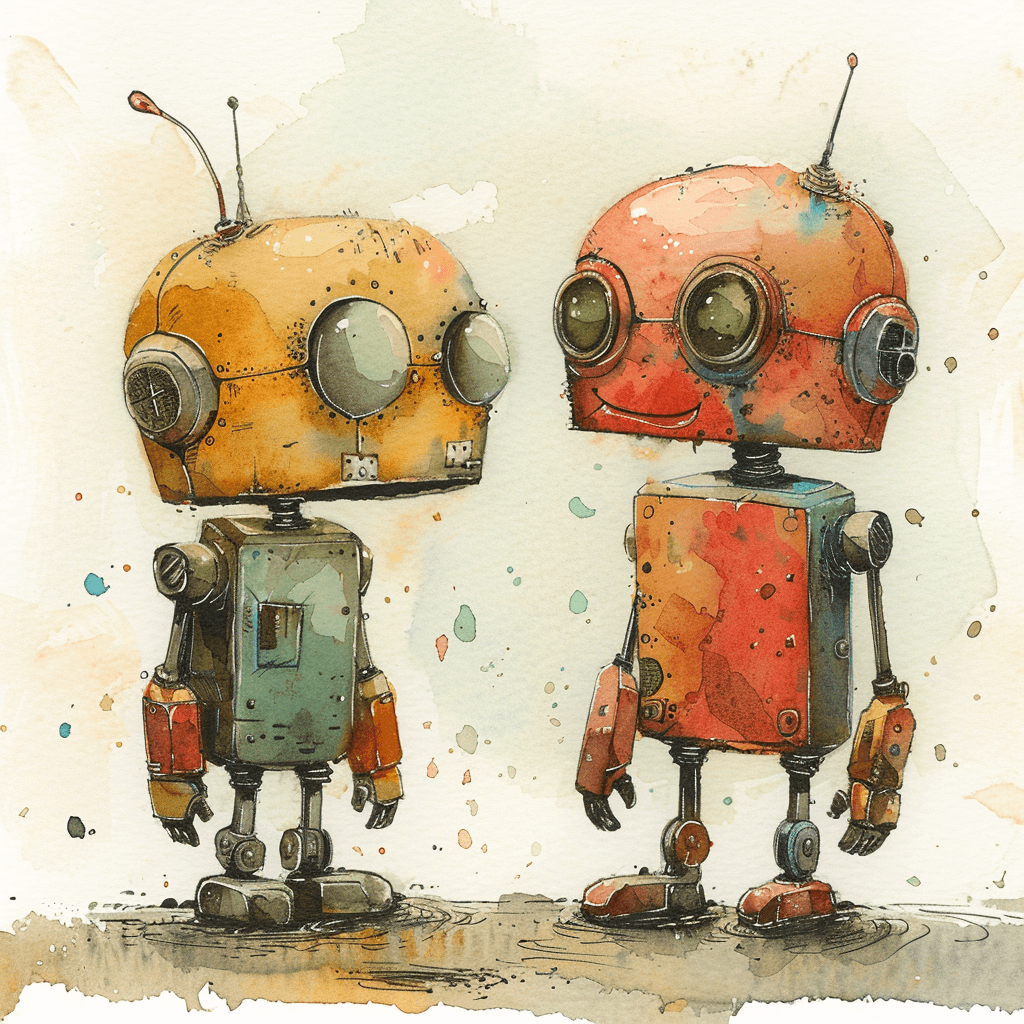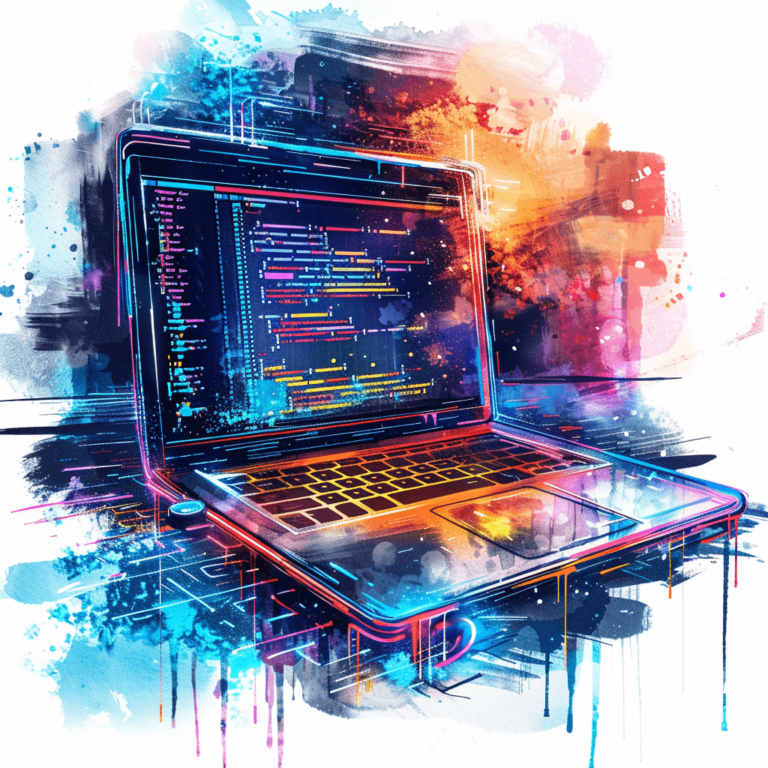
In the rapidly evolving landscape of artificial intelligence, two terms are frequently used interchangeably yet represent fundamentally different capabilities: chatbots and AI agents. At Codegig, we regularly encounter businesses confused about which technology best suits their needs. This confusion is understandable—both technologies leverage AI, interact with users, and can automate certain tasks. However, their capabilities, complexity, and potential business impact differ significantly. Understanding these differences is crucial for making informed implementation decisions.
Beyond the Terminology: Fundamental Differences
At their core, chatbots and AI agents serve different purposes and operate with different levels of sophistication. Understanding these fundamental differences provides the foundation for making the right choice for your business needs.
Chatbots: Conversation Specialists
Chatbots are primarily designed for conversational interactions. They excel at understanding user queries expressed in natural language and providing appropriate responses or executing simple, predefined actions. Modern AI-powered chatbots have evolved significantly from their rule-based predecessors, now capable of understanding context, maintaining conversation history, and handling a wide range of expressions for the same intent.
These systems shine in situations requiring natural conversation flows, such as customer support for common questions, appointment scheduling, or order status inquiries. Their primary value lies in their ability to provide immediate, 24/7 responses to user queries while reducing the load on human staff for routine interactions.
Advanced chatbots can integrate with backend systems to provide personalized responses based on user data and history. They can also handle basic transactions like updating account information or processing simple orders. However, their capabilities typically remain centered around conversation and simple, predefined actions.
AI Agents: Autonomous Problem Solvers
AI agents represent a fundamentally different approach to artificial intelligence applications. While they may include conversational capabilities, their defining characteristic is autonomy—the ability to perceive their environment, make decisions, and take actions to achieve specific goals with minimal human oversight.
These systems are designed to handle complex workflows that require judgment, adaptation, and coordination across multiple systems. Rather than simply responding to user inputs, AI agents proactively pursue objectives, making decisions based on their understanding of the situation and available options.
Advanced AI agents can learn from experience, improving their performance over time through reinforcement learning and other adaptive mechanisms. They maintain sophisticated models of their environment, allowing them to anticipate consequences and optimize their actions accordingly. Most importantly, they can handle tasks requiring multiple steps and decision points without needing continuous human guidance.
Key Capability Differences
The distinction between chatbots and AI agents becomes clearer when examining specific capabilities:
Decision-Making Complexity
Chatbots typically make relatively simple decisions based on pattern matching and intent recognition. They identify what the user is asking for and select from a predefined set of responses or actions. While modern chatbots can appear quite sophisticated in their language understanding, their decision-making remains relatively straightforward.
AI agents, by contrast, can make complex decisions involving multiple variables, uncertainties, and competing objectives. They can evaluate different courses of action, considering both immediate outcomes and long-term consequences. This capability enables them to handle tasks requiring judgment, prioritization, and strategy—functions that would be beyond the reach of conventional chatbots.
Domain Knowledge and Specialization
Modern chatbots can be trained to operate within specific domains, developing specialized vocabulary and response patterns for industries like healthcare, finance, or technical support. However, their knowledge typically remains at a surface level, focusing on recognizing relevant queries and providing appropriate information.
AI agents often incorporate deep domain expertise and specialized reasoning capabilities relevant to their area of operation. They can apply industry-specific frameworks, compliance requirements, and best practices to their decision-making. This enables them to provide not just information but expert-level judgment in complex situations.
For example, a financial services chatbot might answer questions about account balances and transaction history, while a financial AI agent could analyze spending patterns, identify investment opportunities based on market conditions, and proactively recommend portfolio adjustments aligned with the client’s goals and risk tolerance.
System Integration and Action Scope
Chatbots typically have limited integration with backend systems, focused primarily on retrieving information or initiating simple transactions. Their actions are generally constrained to a narrow set of predefined operations directly related to user requests.
AI agents often feature deep integration across multiple systems, with the ability to coordinate complex workflows spanning different platforms and departments. They can initiate and manage sequences of actions, monitor outcomes, and adjust their approach based on results. This capability enables them to handle end-to-end processes that would require multiple interactions with a chatbot.
Learning and Adaptation
While modern chatbots can improve through training and feedback, their learning typically focuses on better understanding user intents and providing more accurate responses. Their core behavior models remain relatively static once deployed.
AI agents incorporate more sophisticated learning mechanisms, enabling them to adapt their strategies based on outcomes and changing conditions. They can identify patterns in their environment, experiment with different approaches, and optimize their performance over time. This adaptability makes them particularly valuable for dynamic environments where conditions and requirements evolve.
Business Applications and Use Cases
The different capabilities of chatbots and AI agents make them suitable for distinct business applications:
Ideal Chatbot Applications
Chatbots excel in scenarios requiring efficient handling of routine interactions and inquiries:
Customer Support Triage: They can handle common questions, collect initial information, and route complex issues to appropriate human agents. This approach dramatically reduces wait times and allows human agents to focus on high-value interactions.
Information Retrieval and FAQs: Chatbots provide immediate access to information about products, services, policies, and procedures. Their 24/7 availability ensures customers can get answers whenever they need them.
Simple Transactions: Appointment scheduling, order status checks, and basic account management can be efficiently handled by chatbots, providing convenience for users while reducing operational costs.
Lead Qualification: In sales environments, chatbots can engage website visitors, qualify potential leads by asking relevant questions, and schedule follow-ups with sales representatives for promising prospects.
These applications share common characteristics: they involve relatively structured interactions, have clear success criteria, and require limited decision-making complexity.
Ideal AI Agent Applications
AI agents are better suited for scenarios requiring judgment, complex decision-making, and proactive management:
Workflow Automation: AI agents can manage complex business processes spanning multiple systems and departments, ensuring consistent execution while adapting to exceptions and special cases.
Personalized Advisory Services: In industries like finance, healthcare, and education, AI agents can provide tailored recommendations based on comprehensive analysis of individual situations, preferences, and objectives.
Resource Optimization: AI agents excel at dynamic allocation of resources like personnel, equipment, and inventory based on changing demand patterns and business priorities.
Proactive Risk Management: By continuously monitoring operations and external factors, AI agents can identify emerging risks and initiate preventive actions before problems materialize.
Complex Customer Journey Management: AI agents can coordinate personalized customer experiences across multiple touchpoints and channels, ensuring consistency while adapting to individual preferences and behaviors.
These applications typically involve unstructured or semi-structured processes, require balancing multiple objectives, and benefit from adaptive strategies that improve over time.
Implementation Considerations
Organizations considering either technology should evaluate several key factors:
Business Objectives and Success Metrics
Before selecting between chatbots and AI agents, clearly define what you hope to achieve. Are you primarily looking to improve customer service efficiency, enhance user experience, automate complex processes, or enable new capabilities? Different objectives may point toward different solutions.
Establish concrete success metrics aligned with your business goals. These might include customer satisfaction scores, resolution times, automation rates, error reduction, or revenue impact. Having clear metrics helps evaluate the effectiveness of your implementation and guides ongoing optimization.
User Experience Design
For chatbots, focus on creating natural, efficient conversation flows that quickly address user needs. Consider how the chatbot will handle misunderstandings, transition to human agents when necessary, and maintain conversation context across interactions.
For AI agents, carefully design the balance between autonomy and transparency. Users should understand what the agent is doing on their behalf and maintain appropriate control over significant decisions. Consider how the agent will explain its reasoning and recommendations, particularly for consequential actions.
Integration Requirements
Evaluate the systems and data sources your solution will need to access. Chatbots typically require integration with knowledge bases, user account information, and basic transaction systems. AI agents often need deeper integration with operational systems, analytics platforms, and external data sources.
Consider authentication and authorization requirements, particularly for actions that involve sensitive information or significant consequences. Ensure your security architecture supports appropriate access controls while enabling the functionality your solution requires.
Development and Maintenance Approach
Chatbot development has become increasingly accessible, with numerous platforms offering low-code or no-code options for building conversational interfaces. These platforms can accelerate implementation but may limit customization and advanced capabilities.
AI agent development typically requires more specialized expertise and custom development, particularly for complex decision-making logic and system integrations. Consider whether you have the internal capabilities for this work or would benefit from partnering with experienced providers like Codegig.
For both technologies, plan for ongoing maintenance and improvement. Establish processes for monitoring performance, gathering user feedback, and regularly updating your solution to address gaps and incorporate new capabilities.
The Hybrid Approach: When to Combine Technologies
While we’ve focused on the distinctions between chatbots and AI agents, many organizations benefit from combining these technologies in complementary ways:
Front-end and Back-end Division: Chatbots can provide natural language interfaces for users, while AI agents handle complex processing and decision-making behind the scenes. This approach combines user-friendly interaction with sophisticated functionality.
Escalation Pathways: Systems can begin with chatbot interactions for routine matters and escalate to AI agents for complex scenarios requiring judgment or specialized expertise. This tiered approach efficiently handles varied user needs.
Domain Specialization: Organizations can deploy chatbots for general inquiries across multiple domains while implementing specialized AI agents for specific high-value or complex areas that justify deeper investment.
At Codegig, we often recommend hybrid architectures that leverage the strengths of both technologies while addressing their respective limitations. This approach delivers immediate value through chatbot functionality while establishing foundations for more advanced AI agent capabilities as your needs evolve.
Codegig’s Approach to Implementation
Our methodology for implementing either chatbots or AI agents follows a structured yet flexible approach:
- Strategic Assessment: We begin by understanding your business objectives, user needs, and existing systems to determine which technology—or combination—best addresses your requirements.
- Solution Design: Our team develops detailed specifications for functionality, user experience, integrations, and deployment architecture, ensuring alignment with your business goals.
- Iterative Development: We build solutions incrementally, allowing for testing and refinement throughout the development process. This approach reduces risk and ensures the final solution meets your needs.
- Integration and Testing: We ensure seamless integration with your existing systems and conduct comprehensive testing across various scenarios and edge cases.
- Deployment and Training: We manage the transition to production, provide documentation, and train your team on effectively using and managing the new system.
- Continuous Improvement: After launch, we monitor performance, gather user feedback, and implement regular updates to enhance functionality and address emerging needs.
Conclusion: Making the Right Choice
The choice between chatbots and AI agents—or implementing both in a complementary fashion—should be driven by your specific business objectives, process complexity, and user needs rather than technology trends.
Chatbots remain the most appropriate solution for many customer service and information access scenarios, offering cost-effective automation of routine interactions with relatively straightforward implementation. AI agents provide transformative capabilities for complex processes requiring judgment, adaptation, and proactive management, though with greater implementation complexity and resource requirements.
At Codegig, we help organizations navigate these decisions based on business value rather than technological novelty. Our expertise across both chatbot and AI agent technologies enables us to recommend and implement solutions that deliver meaningful impact aligned with your strategic objectives.
Whether you’re considering your first AI implementation or looking to enhance existing capabilities, we’re here to help you navigate the evolving landscape of intelligent automation.
Ready to explore how chatbots or AI agents could transform your business operations? Contact Codegig to discuss your specific challenges and opportunities.


